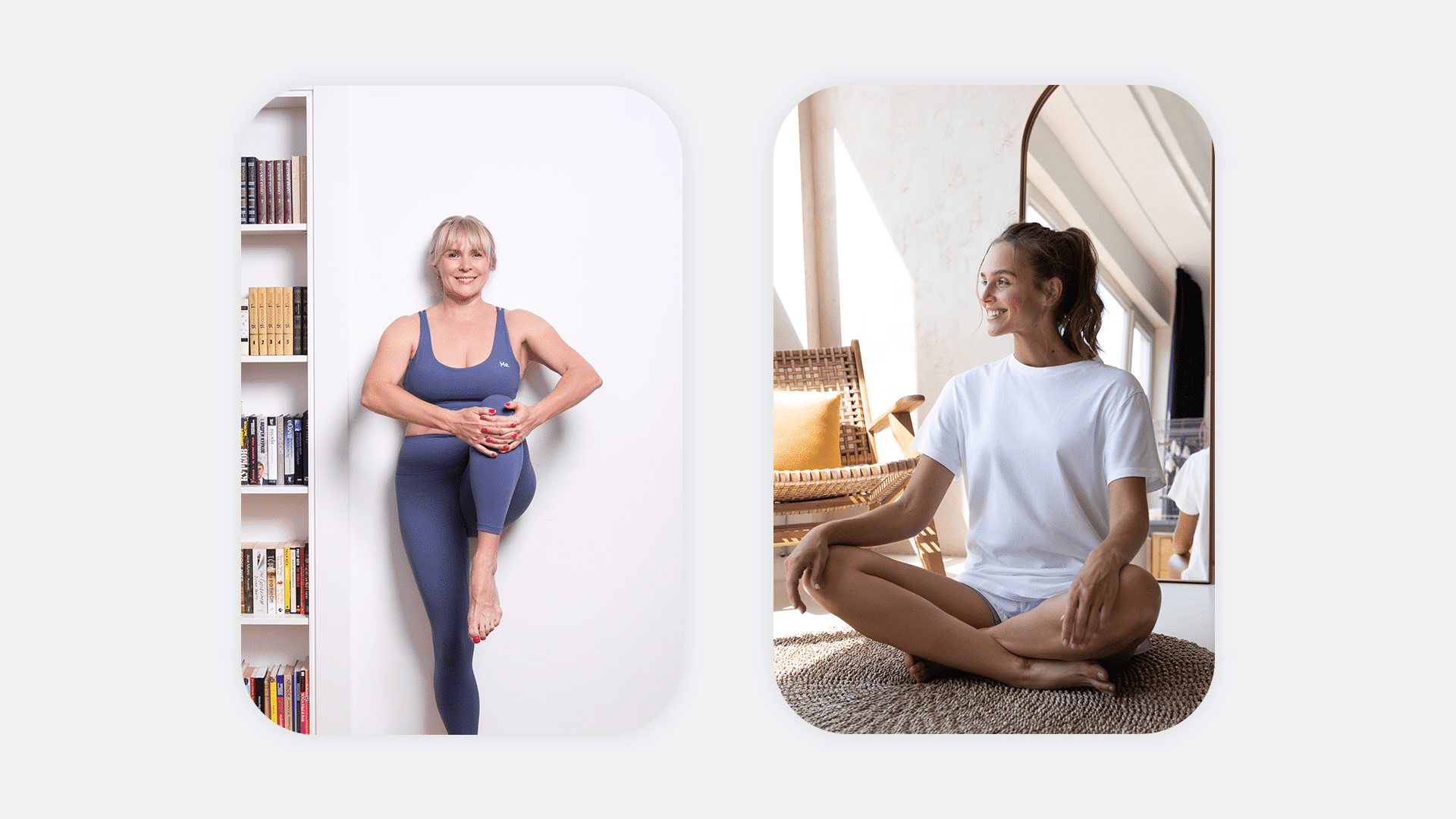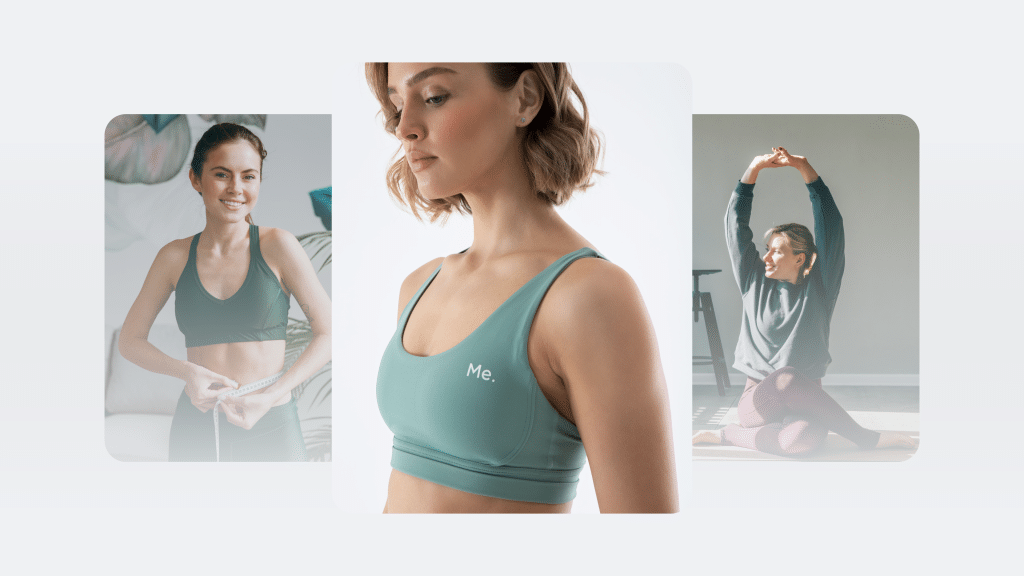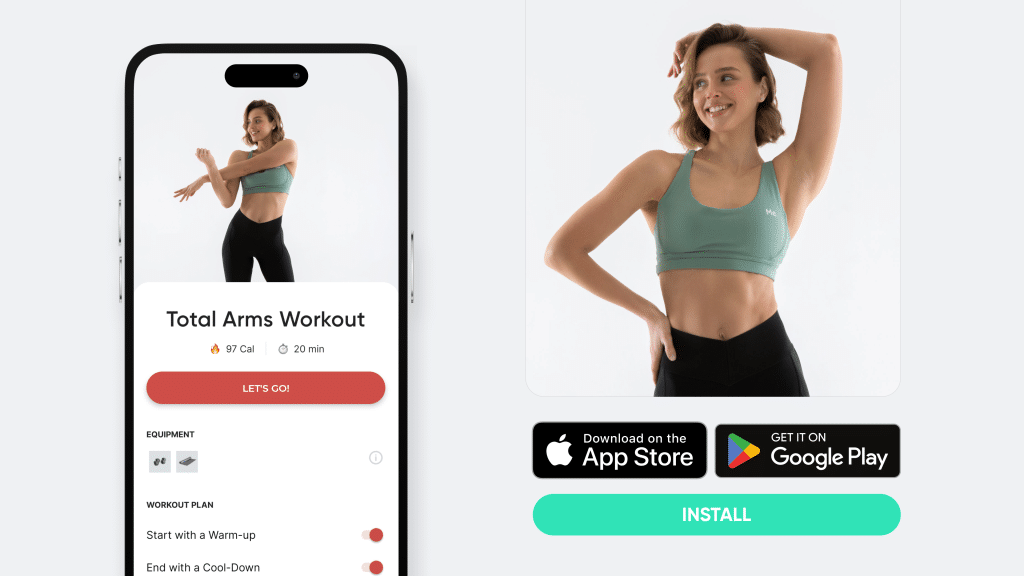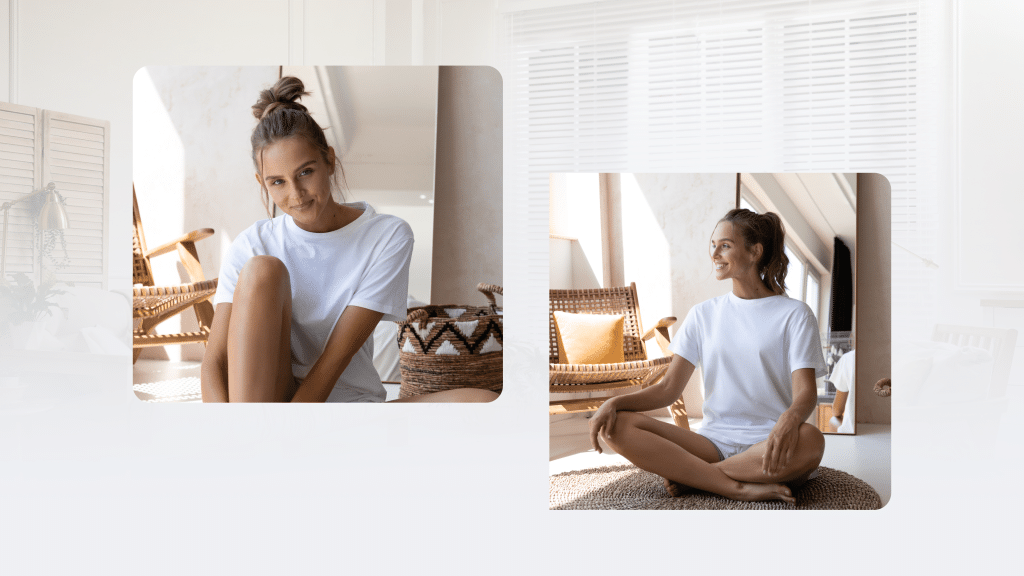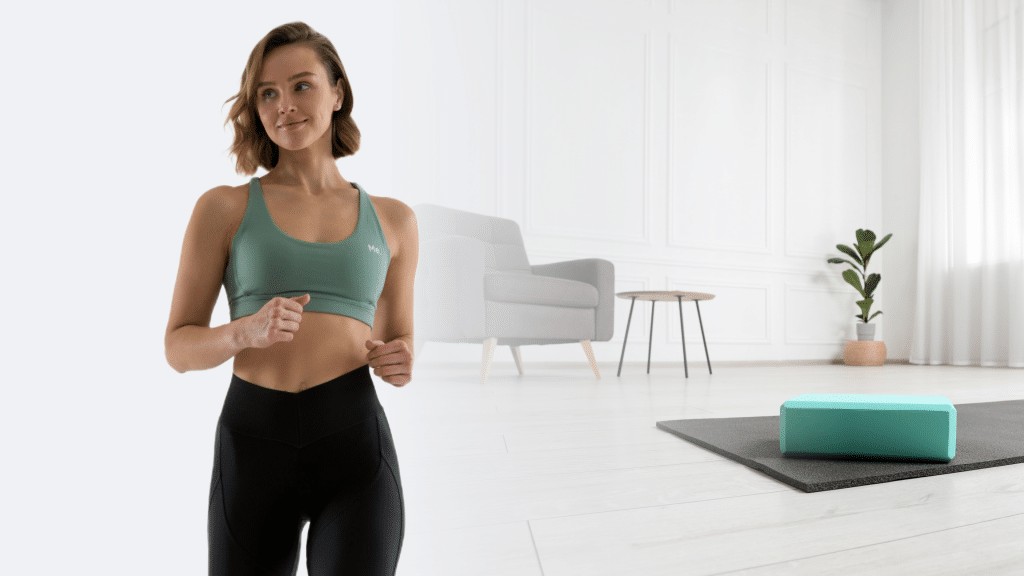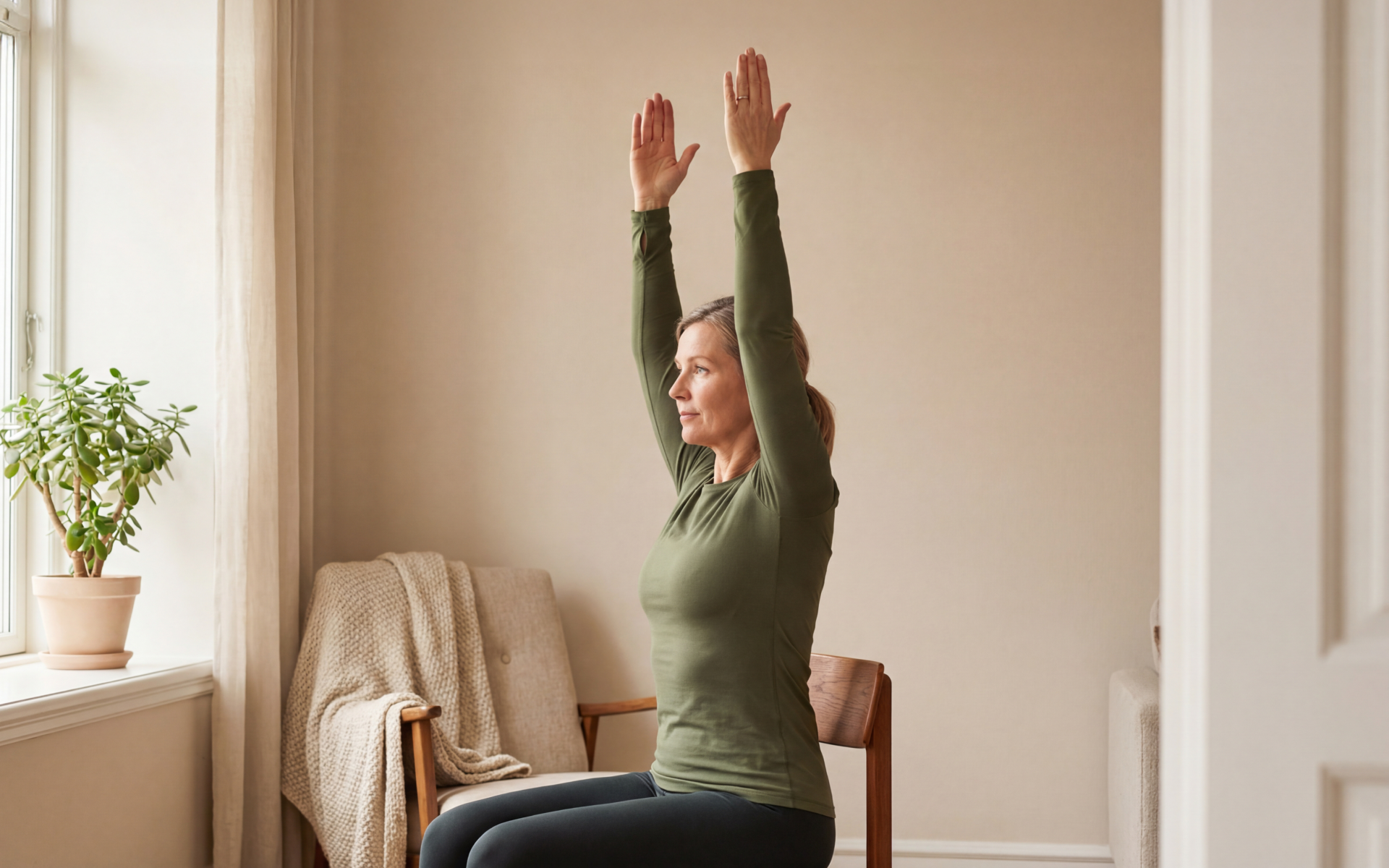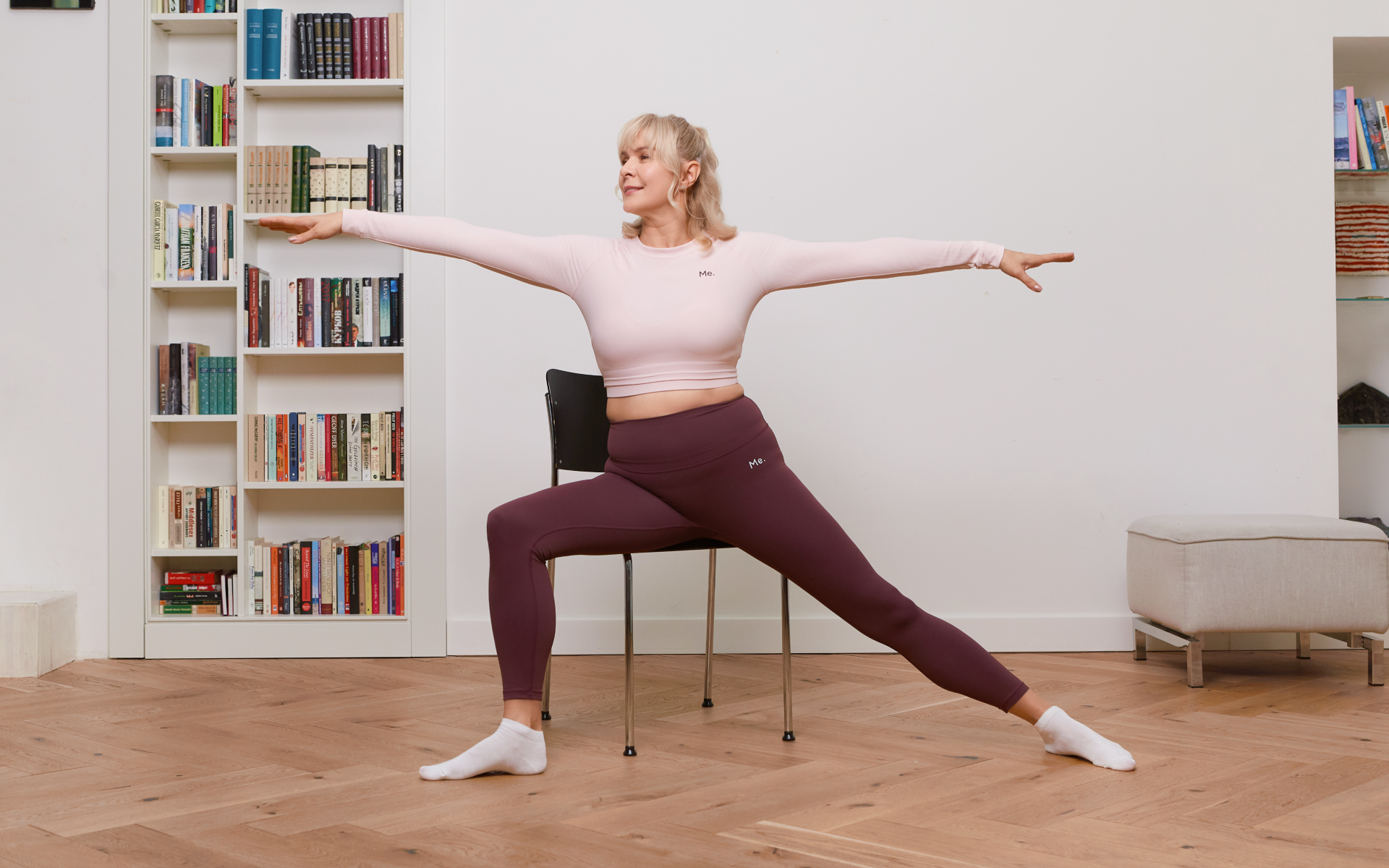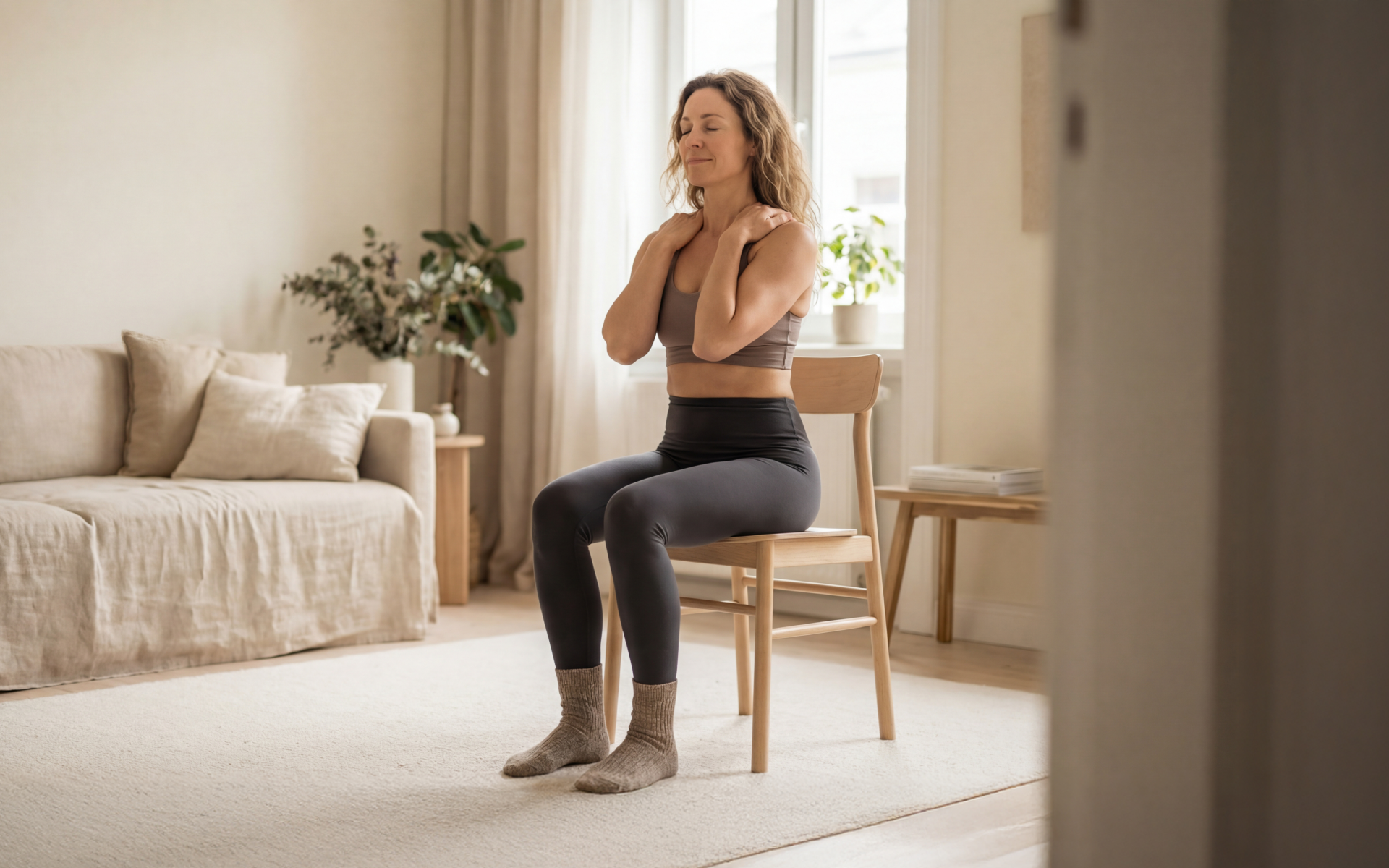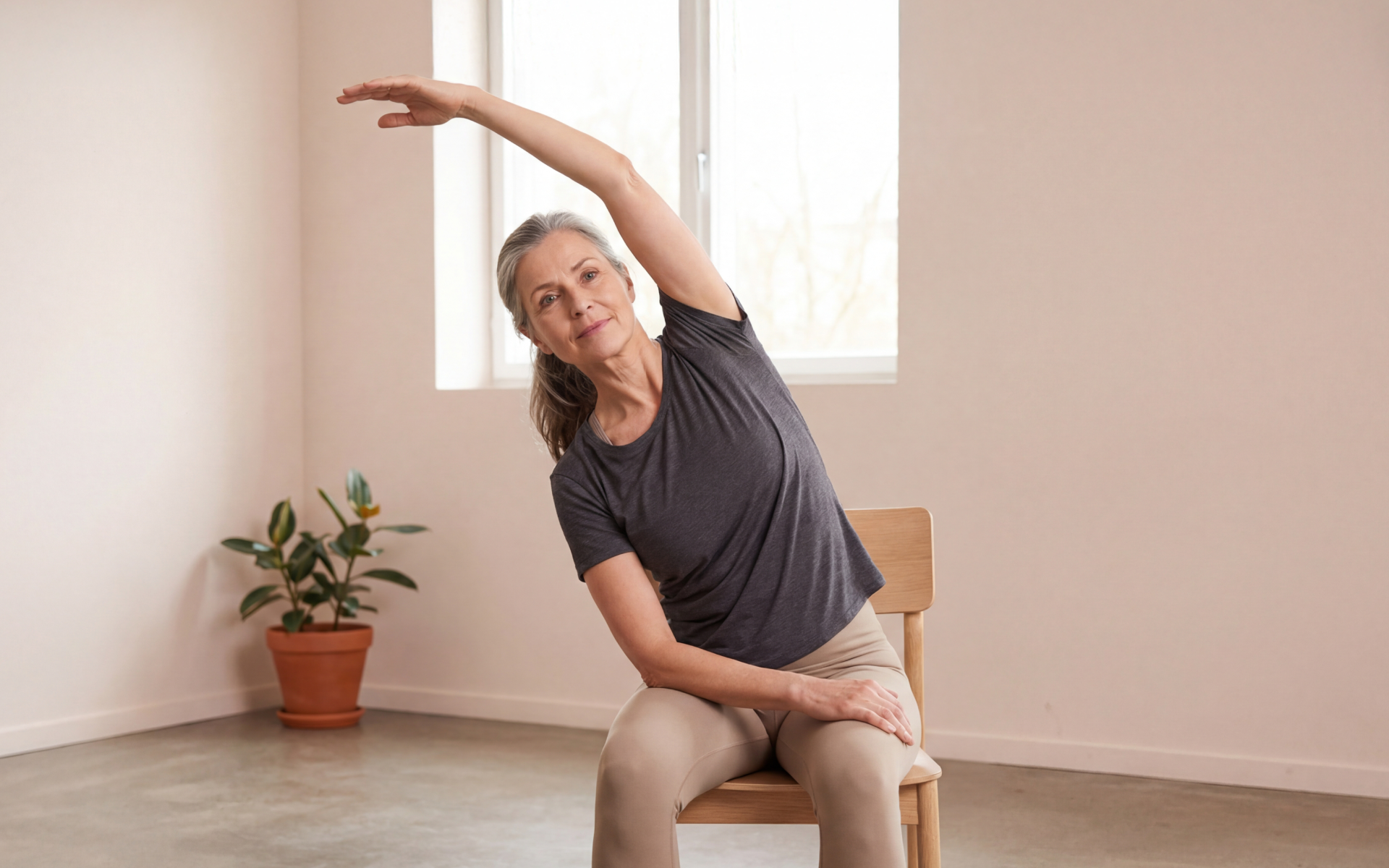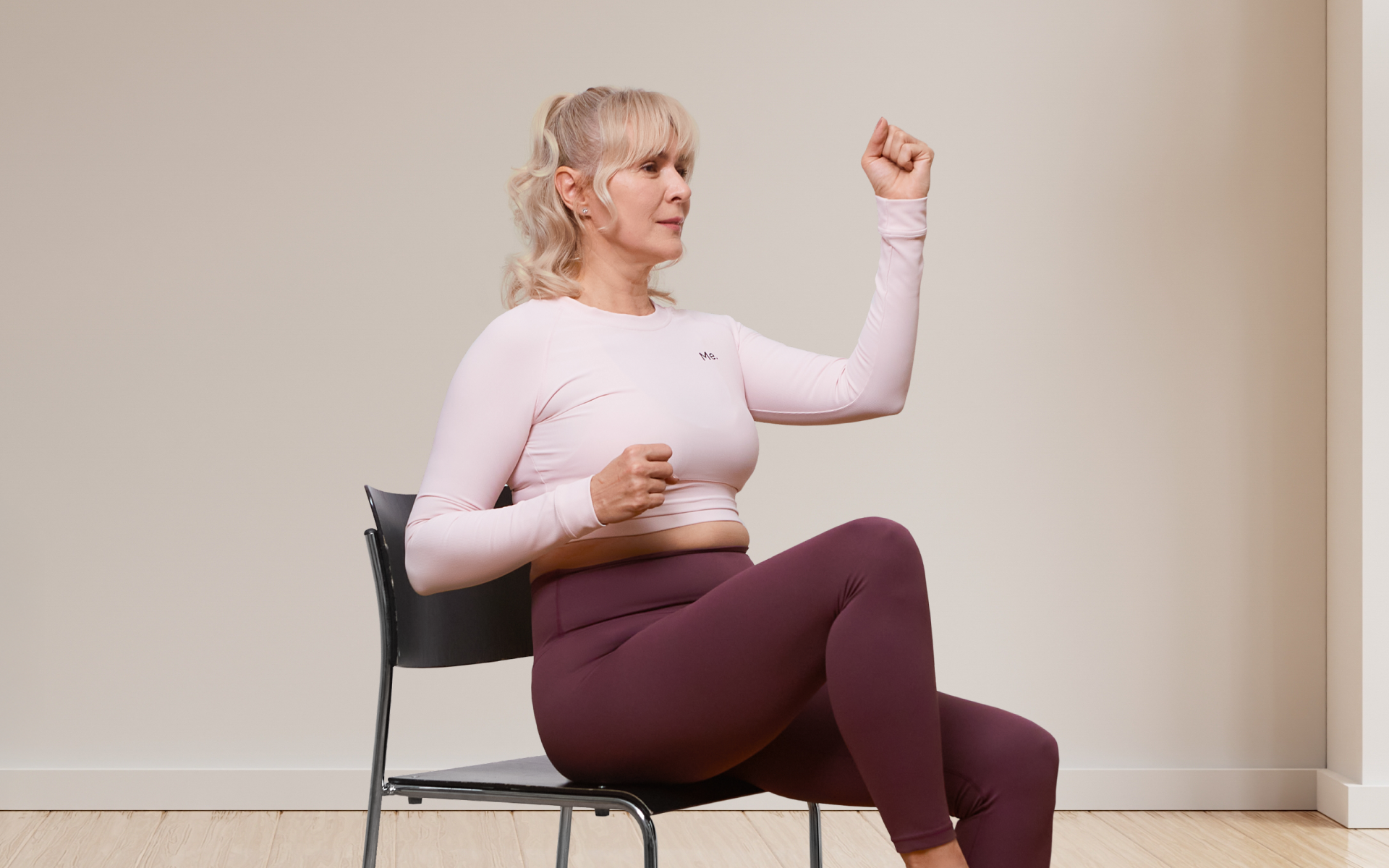Our comprehensive guide to gentle chair yoga is designed to introduce you to this transformative practice that’s perfect for any age or fitness level. In this post we’ll explore the numerous benefits of chair yoga, including increased flexibility, better balance, reduced stress, and improved overall health. Also we’ll emphasize the importance of regular physical activity for seniors and beginners and discuss how adopting a gentle yoga practice can contribute to a more active and fulfilling life. Whether you’re new to yoga or you’re searching for an accessible way to stay fit, continue reading to embark on your journey toward improved wellness with chair yoga.
What Is Gentle Vinyasa Yoga?
Gentle Vinyasa yoga is a softer, slower-paced variation of traditional Vinyasa yoga. It focuses on smoothly transitioning from one pose to another while synchronizing breath with movement.
It is designed to be more accessible and less strenuous, making it suitable for beginners, seniors, individuals recovering from injuries, or those with limited mobility.
In gentle Vinyasa yoga classes, the emphasis is on cultivating mindfulness, relaxation, and deep breathing while gently stretching and strengthening the body.
Sequences are typically composed of basic yoga poses, with longer periods of rest between each pose and modifications offered to accommodate various levels of flexibility and strength.
This approach helps practitioners develop a better understanding of their bodies, improve balance and flexibility, and reduce stress without causing strain or discomfort (1).
What Is Gentle Chair Yoga?
Gentle chair yoga is a modified version of traditional yoga that incorporates the use of a chair as a supportive prop. This makes it more accessible and comfortable for individuals with limited mobility, balance issues, or physical restrictions.
This type of yoga is particularly well-suited for seniors, beginners, and those recovering from injuries.
In gentle chair yoga, practitioners perform seated and standing poses with the assistance of a chair, which provides stability and support. The practice focuses on gentle stretches, mindful breathing, and relaxation techniques to improve flexibility, strength, and overall well-being (2).
By adapting traditional yoga postures to use with a chair, gentle chair yoga makes it possible for people of all ages and abilities to experience the physical and mental benefits of yoga in a safe, low-impact manner with additional benefits such as a reduction in chronic pain (2)
Read More: Does Chair Yoga For Lower Back Pain Help?
What Kind Of Yoga Is Good For Beginners And Seniors?
Both gentle Vinyasa yoga and gentle chair yoga offer benefits for beginners and seniors, but gentle chair yoga has some distinct advantages for these groups.
The use of a chair as a prop provides additional support and stability, making it particularly well-suited for seniors or anyone with limited mobility or balance concerns. This extra support allows practitioners to engage in yoga without fear of injury or strain, making it a more accessible option.
Gentle Vinyasa yoga, while slower and less intense than traditional Vinyasa, may still pose challenges for some beginners and seniors, especially if they have difficulty maintaining balance or transitioning between poses.
However, it can still be a good option for those who are relatively fit and looking for a gentle introduction to a more dynamic yoga practice.
If you’re undecided between the two, this comparative analysis may help:
Gentle Vinyasa Yoga
- Focuses on smooth transitions between poses, with breath-synchronized to movement.
- Typically involves a sequence of flowing postures that gently stretch and strengthen the body.
- Offers a softer, slower-paced version of traditional Vinyasa, making it more accessible to beginners.
- Encourages mindfulness, relaxation, and deep breathing.
- Can be modified to accommodate various levels of flexibility and strength.
Gentle Chair Yoga
- Incorporates a chair as a supportive prop, making it ideal for individuals with limited mobility, balance issues, or physical restrictions.
- Allows practitioners to perform seated and standing poses with the assistance of a chair for stability and support.
- Focuses on gentle stretches, mindful breathing, and relaxation techniques.
- Highly accessible for seniors and beginners due to its low-impact nature.
- Offers the physical and mental benefits of traditional yoga in a safe and comfortable manner.
If you wish to cinch your waist, tone up your bat wings, blast away the muffin top – our fitness app was created to cater to all your needs! BetterMe won’t give excess weight a chance!
What Are Some Good Chair Yoga Exercises For Beginners And Seniors?
Here are five beneficial chair yoga exercises for beginners, along with their benefits and step-by-step instructions:
Seated Mountain Pose (Tadasana)
This foundational pose helps improve posture and body awareness.
- Sit on a chair with your feet flat on the floor, hip-width apart.
- Lengthen your spine and relax your shoulders.
- Rest your hands on your thighs or by your sides.
- Engage your core muscles and gently tuck your chin.
- Inhale deeply, and as you exhale, imagine a string pulling the crown of your head toward the ceiling.
- Hold the pose for 5-10 breaths.
Seated Cat-Cow Stretch
This exercise increases spine flexibility and releases tension in the neck and shoulders.
- Sit comfortably on a chair with your feet flat on the floor.
- Place your hands on your knees.
- Inhale and arch your back, lifting your chest and gazing upward (Cow).
- Exhale and round your spine, tucking your chin toward your chest (Cat).
- Repeat the sequence 5-10 times, moving with your breath.
Seated Forward Bend (Paschimottanasana)
This pose stretches the hamstrings and lower back, promoting relaxation.
- Sit on the edge of a chair with your feet hip-width apart.
- Inhale and lengthen your spine.
- Exhale and hinge at your hips, folding forward over your legs.
- Allow your hands to rest on your shins, ankles, or the floor.
- Keep your neck relaxed and gaze downward.
- Hold the pose for 5-10 breaths.
Seated Spinal Twist (Ardha Matsyendrasana)
This exercise helps improve spinal mobility and aids digestion.
- Sit sideways on a chair with your right hip against the chair’s backrest.
- Keep both feet flat on the floor and knees facing forward.
- Inhale and lengthen your spine, then exhale and twist to the right.
- Hold the backrest with your left hand and place your right hand on your right thigh.
- Gently deepen the twist with each exhalation, without straining.
- Hold the pose for 5-10 breaths, then repeat on the other side.
Seated Warrior II (Virabhadrasana II)
This standing pose strengthens the legs and improves balance.
- Stand behind a chair, holding the backrest with both hands for support.
- Step your right foot forward and your left foot back, keeping both feet parallel to the chair.
- Bend your right knee, ensuring it is aligned above your ankle.
- Extend your left leg straight, pressing your left heel into the ground.
- Engage your core muscles and maintain a tall, straight posture.
- Hold the pose for 5-10 breaths, then switch sides.
Seated Side Stretch (Parsva Sukhasana)
This stretch improves flexibility in the spine and shoulders.
- Sit comfortably on a chair with your feet flat on the floor.
- Inhale and lift your arms overhead, palms facing each other.
- Exhale and gently lean to the right, keeping both hips grounded on the chair.
- Hold the pose for 3-5 breaths, then inhale to return to center.
- Repeat on the left side.
Read More: Unlock The Mind-Body Connection With Fun, Safe Chair Yoga For Kids
Seated Marching
This exercise strengthens the hip flexors and improves balance.
- Sit on a chair with your back straight and feet flat on the floor.
- Hold onto the sides of the chair for support.
- Slowly lift your right knee toward your chest without rounding your back.
- Lower your right foot back to the floor.
- Repeat with your left knee.
- Continue alternating legs for 10-15 repetitions on each side.
Ankle Circles
This exercise promotes ankle mobility and helps prevent stiffness.
- Sit on a chair with your feet flat on the floor.
- Lift your right foot off the floor and slowly rotate your ankle, making circles in the air.
- Perform 5-10 circles in each direction, then switch to your left foot.
Seated Tree Pose (Vrksasana)
This modified standing pose improves balance and hip flexibility.
- Sit on a chair with your back straight and feet flat on the floor.
- Place your right ankle on your left thigh, just above the knee.
- Keep your right foot flexed to protect your knee.
- Gently press your right knee down to open the hip.
- Hold the pose for 5-10 breaths, then switch sides.
Neck Stretches
These gentle stretches relieve tension in the neck and shoulders.
- Sit comfortably on a chair with your feet flat on the floor.
- Slowly lower your right ear toward your right shoulder, keeping your left shoulder relaxed.
- Hold the stretch for 3-5 breaths, then return to center.
- Repeat on the left side.
- Next, slowly turn your head to the right, looking over your right shoulder.
- Hold the stretch for 3-5 breaths, then return to center.
- Repeat on the left side.
BetterMe is your fast-track ticket to a long-lasting weight loss! Tailor your fitness journey and maximize your results with just a couple of swipes!
Sample Seated Gentle Yoga Sequence
Here’s a sample seated gentle yoga sequence incorporating the exercises described above. This sequence is designed to provide a balanced practice, targeting various muscle groups and promoting relaxation.
Seated Mountain Pose (Tadasana)
- Begin by sitting on a chair with your feet flat on the floor, hip-width apart.
- Focus on your breath and posture for 5-10 breaths.
Seated Cat-Cow Stretch
- Place your hands on your knees and alternate between arching and rounding your spine, following your breath for 5-10 repetitions.
Seated Side Stretch (Parsva Sukhasana)
- Raise your arms overhead, and gently lean to the right, then to the left, holding each side for 3-5 breaths.
Seated Forward Bend (Paschimottanasana)
- Hinge at your hips, folding forward over your legs.
- Hold the pose for 5-10 breaths.
Seated Spinal Twist (Ardha Matsyendrasana)
- Twist to the right, holding the backrest with your left hand.
- Hold the pose for 5-10 breaths, then repeat on the other side.
Seated Tree Pose (Vrksasana)
- Place your right ankle on your left thigh and gently press your right knee down.
- Hold the pose for 5-10 breaths, then switch sides.
Seated Marching
- Lift your right knee toward your chest, then lower it back to the floor.
- Repeat with your left knee.
- Continue alternating legs for 10-15 repetitions on each side.
Ankle Circles
- Lift your right foot off the floor and rotate your ankle in circles, 5-10 times in each direction.
- Repeat with your left foot.
Neck Stretches
- Slowly lower your right ear toward your right shoulder, then return to center.
- Repeat on the left side.
- Then, turn your head to the right and hold the stretch, followed by the left side.
- Hold each stretch for 3-5 breaths.
Final Relaxation
- Return to Seated Mountain Pose, resting your hands on your thighs or by your sides.
- Close your eyes and focus on your breath for a few minutes, allowing your body and mind to fully relax.
Feel free to modify this sequence according to your preferences or physical limitations. Remember to consult with a healthcare professional before starting any exercise program and listen to your body throughout the practice.
Tips For An Effective Chair Yoga Session For Beginners And Seniors
To ensure an effective and enjoyable chair yoga session, follow these tips:
Choose The Right Chair
Use a sturdy, comfortable chair with a straight backrest and no wheels. Be sure it provides proper support and doesn’t restrict your movements during poses.
Wear Comfortable Clothing
Dress in clothing that allows for freedom of movement and doesn’t restrict your range of motion. Soft, stretchy fabrics are ideal.
Create A Calm Environment
Practice in a quiet, well-lit space free from distractions. You may wish to play soothing music, light candles, or use essential oils to enhance relaxation.
Warm-Up
Start your session with gentle warm-up exercises, such as neck rolls, shoulder shrugs, and ankle circles, gradually increase the range of motion as you work through these movements to prepare your body for more intense movements.
Focus On Your Breath
Pay attention to your breath throughout the practice, using it as a guide to help you transition smoothly between poses and deepen your stretches.
Maintain Proper Alignment
Ensure your body is correctly aligned during each pose, with your feet flat on the floor, your spine straight, and your shoulders relaxed. This helps prevent injury and ensures maximum benefits.
Modify Poses As Needed
Listen to your body and adapt poses to best suit your individual needs and limitations. If a pose becomes uncomfortable or painful, come out of it or modify it as necessary.
Use Props
Don’t hesitate to use props such as blocks, straps, or cushions to assist you in maintaining proper alignment and enable you to perform poses in a safe manner.
Be Patient And Consistent
Progress in chair yoga may be gradual, so be patient with yourself and maintain a consistent practice. Over time, you’ll notice improvements in your flexibility, strength, and overall well-being.
The Bottom Line
Chair yoga is an accessible, low-impact form of exercise that offers numerous physical and mental health benefits for individuals of all ages, particularly seniors and beginners.
By practicing gentle stretches, mindful breathing, and relaxation techniques, chair yoga can help improve flexibility, strength, balance, and overall well-being without causing strain or discomfort.
DISCLAIMER:
This article is intended for general informational purposes only and does not serve to address individual circumstances. It is not a substitute for professional advice or help and should not be relied on for making any kind of decision-making. Any action taken as a direct or indirect result of the information in this article is entirely at your own risk and is your sole responsibility.
BetterMe, its content staff, and its medical advisors accept no responsibility for inaccuracies, errors, misstatements, inconsistencies, or omissions and specifically disclaim any liability, loss or risk, personal, professional or otherwise, which may be incurred as a consequence, directly or indirectly, of the use and/or application of any content.
You should always seek the advice of your physician or other qualified health provider with any questions you may have regarding a medical condition or your specific situation. Never disregard professional medical advice or delay seeking it because of BetterMe content. If you suspect or think you may have a medical emergency, call your doctor.
SOURCES:
- “A Feeling of Connectedness”: Perspectives on a Gentle Yoga Intervention for Women with Major Depression (2013, nih.gov)
- Yoga for Healthy Aging: Science or Hype? (2021, nih.gov)
